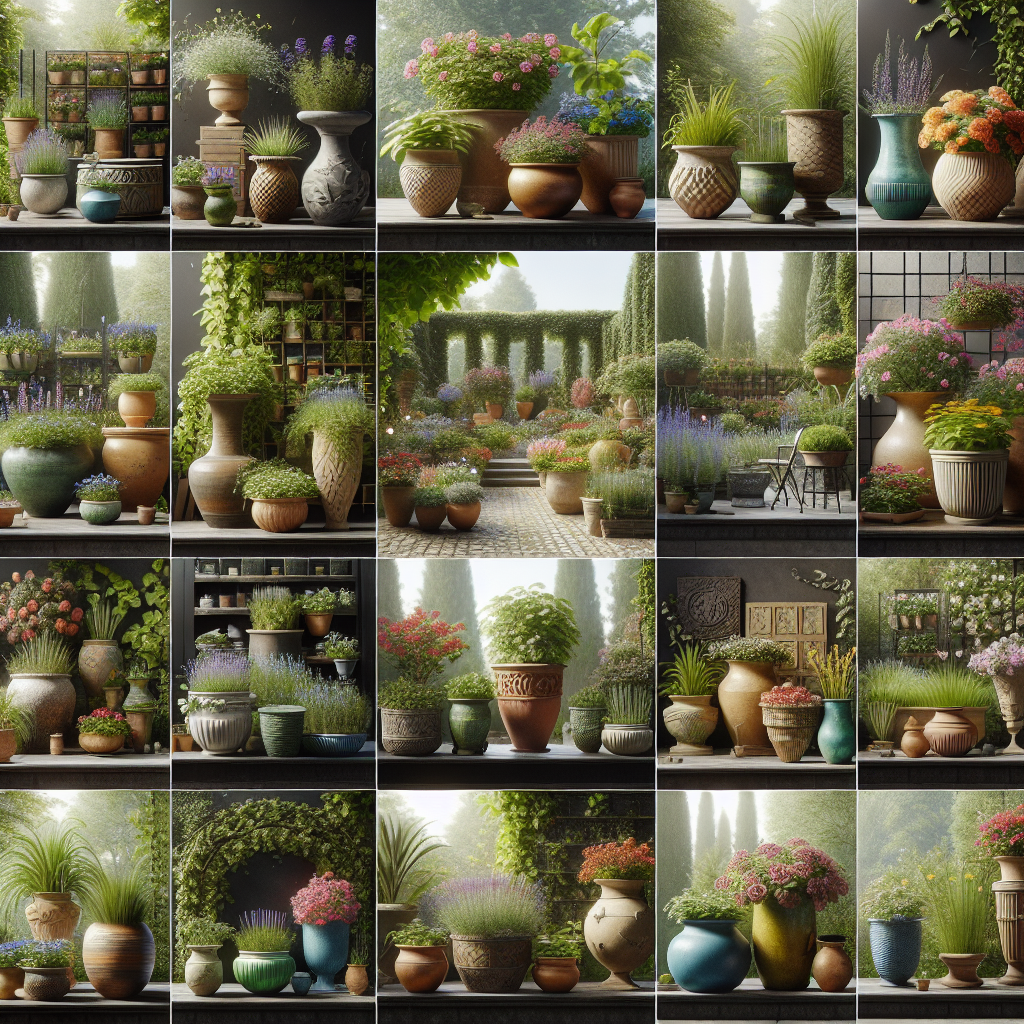Having a beautiful garden is one of the greatest pleasures for any gardening enthusiast. Not only does it add beauty to your outdoor space, but it also provides a therapeutic environment that can help reduce stress and improve mental well-being. Choosing the right containers for your garden plays a crucial role in enhancing the overall look and feel of your outdoor space. With so many options available in the market, it can be overwhelming to make the right choice. In this article, we will discuss some tips for choosing the best containers for your garden.
1. Consider the material
When it comes to choosing containers for your garden, the material plays a significant role in determining its durability and overall aesthetics. Some common materials used for garden containers include terracotta, ceramic, plastic, metal, and wood. Terracotta pots are classic choices that provide a rustic look and are suitable for most plants. Ceramic pots come in various colors and designs, making them great for adding a pop of color to your garden. Plastic containers are lightweight and affordable, making them ideal for those on a budget. Metal containers are durable but may rust over time if not treated properly. Wooden containers are eco-friendly and provide a natural look to your garden.
2. Size matters
The size of the container you choose should match the size of the plant you intend to grow in it. If you plan to grow small herbs or flowers, opt for smaller-sized containers that can accommodate their root systems comfortably. For larger plants such as trees or shrubs, choose larger containers that provide enough room for their roots to spread out. It’s essential to consider the growth habits of the plant when selecting container size to ensure they have enough space to thrive.
3. Drainage is key
Proper drainage is essential for maintaining healthy plants in containers. Without adequate drainage holes at the bottom of the container, excess water can accumulate and lead to root rot or fungal diseases. When choosing containers, make sure they have drainage holes or are made from materials that allow water to evaporate easily, such as terracotta or porous ceramic pots.
4. Consider mobility
If you want the flexibility to move your plants around or bring them indoors during colder months, consider choosing lightweight containers with handles or wheels for easy transportation. Alternatively, you can opt for hanging baskets or vertical planters that can be suspended from hooks or brackets on walls or fences.
5. Think about aesthetics
In addition to functionality, aesthetics also play a significant role in choosing garden containers that complement your outdoor space’s overall design theme. Consider factors such as color, shape, texture, and pattern when selecting containers that match your garden’s style and ambiance.
6. Budget-friendly options
Gardening can be an expensive hobby if you’re not careful with your purchases. To save money on container gardening, consider repurposing items from around your home such as old buckets, tin cans, wooden crates, or even old tires painted in vibrant colors.
7. Maintenance requirements
Different types of container materials require varying levels of maintenance to keep them looking fresh and new over time.
– Terracotta pots need regular cleaning and resealing with waterproof sealants.
– Ceramic pots may chip easily and require delicate handling.
– Plastic pots may fade over time due to exposure to sunlight.
– Metal pots may rust if not treated with rust-resistant coatings.
– Wooden pots require periodic resealing with protective stains or paints.
Choose materials that align with your maintenance preferences and willingness to invest time in upkeep.
In conclusion,
Choosing the best containers for your garden requires careful consideration of various factors such as material durability,
size compatibility with plant growth habits,
adequate drainage provisions,
mobility options,
aesthetics that complement your outdoor space,
budget constraints,
and maintenance requirements.
By following these tips,
you can create a stunning garden filled with healthy plants thriving in their ideal growing conditions within well-chosen containers that enhance their beauty.
Remember – gardening is an art form where each element harmoniously contributes towards creating a lush oasis where nature thrives abundantly!














